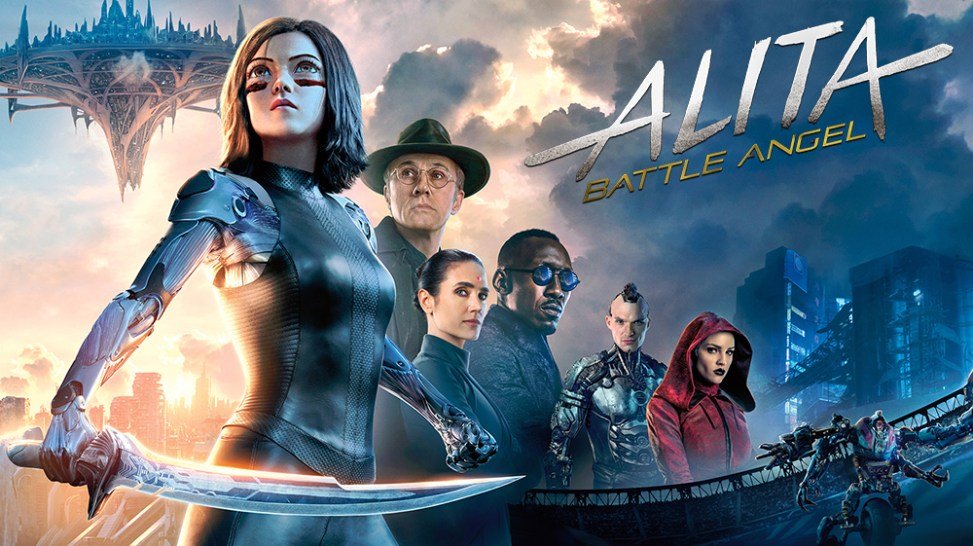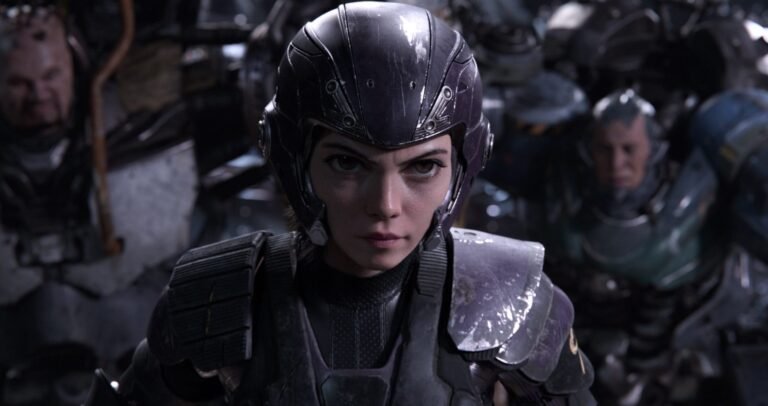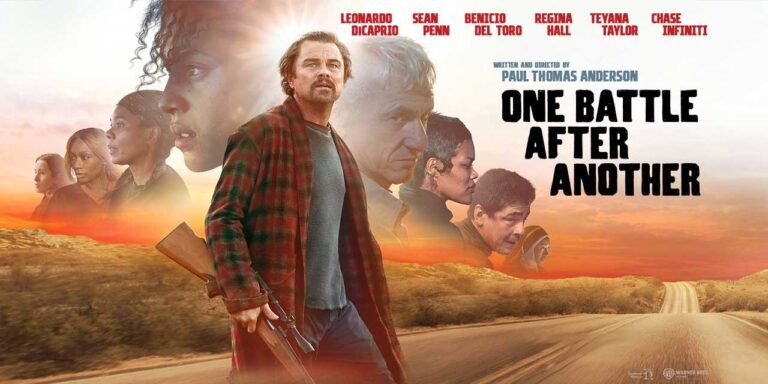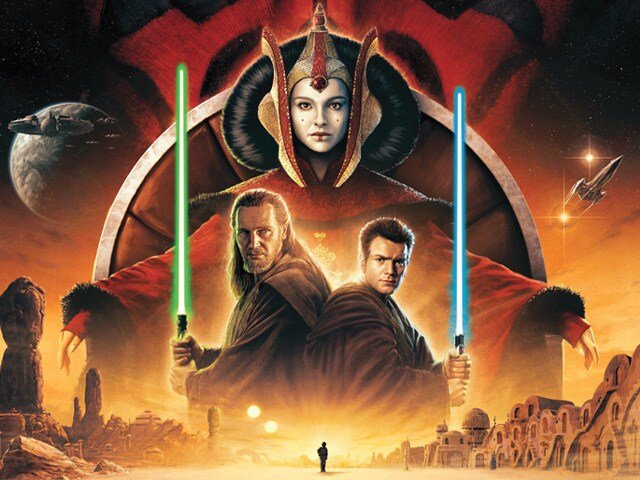
When the first trailers for Alita: Battle Angel hit the internet, I’ll admit I had my reservations. The uncanny valley effect, where computer-generated imagery appears almost, but not entirely, realistic, was immediately evident. As a seasoned film critic, I’ve encountered this phenomenon before, and it often leaves viewers with a sense of unease and disconnect. However, as I delved deeper into the world of Alita, I was pleasantly surprised by the power of the film’s central performance and the overall cinematic experience it offered.
Directed by the talented Robert Rodriguez, Alita: Battle Angel is a cyberpunk masterpiece that transports us to a dystopian future where the line between humanity and technology is blurred. Based on the beloved manga series Battle Angel Alita by Yukito Kishiro, the film follows the journey of Alita, a cyborg discovered in a scrapyard by Dr. Ido, a skilled cybernetics expert played by the ever-versatile Christoph Waltz.
What sets this film apart is the captivating performance of Rosa Salazar as Alita. Utilizing the latest motion capture technology, Salazar breathes life into the character, imbuing her with a sense of wonder, curiosity, and a fierce determination that is truly captivating to behold. Despite the initial unease caused by Alita’s large, expressive eyes and slightly inhuman features, Salazar’s performance quickly draws the audience in, making us forget the technical aspects and fully immerse ourselves in her character’s emotional journey.
Embracing the Uncanny Valley: Alita’s Unique Visual Aesthetic
One of the most striking aspects of Alita: Battle Angel is its visual style. The film’s production design, visual effects, and cinematography seamlessly blend the gritty, industrial landscapes of the dystopian world with the sleek, advanced technology that permeates every frame. The uncanny valley effect, which initially gave me pause, ultimately becomes an integral part of the film’s unique aesthetic.
As Alita navigates this world, her cyborg nature is constantly on display, from her expressive eyes to the intricate mechanical details of her body. This visual approach serves to highlight the blurred boundaries between humanity and technology, a central theme that the film explores. The audience is invited to grapple with the discomfort of the uncanny valley, only to be drawn in by Alita’s captivating personality and the sheer artistry of the filmmaking.
Director Robert Rodriguez, known for his work on films like Sin City and Machete, has truly outdone himself with Alita: Battle Angel. Working in collaboration with producer James Cameron, who has a deep passion for the original manga, Rodriguez has crafted a visually stunning and immersive cinematic experience that pays homage to its source material while also offering a fresh and compelling take on the cyberpunk genre.
The Thrill of Motorball: Alita’s Adrenaline-Fueled Sport

One of the standout elements of Alita: Battle Angel is the introduction of the high-octane sport of Motorball. Set in the dystopian world of Iron City, Motorball is a violent, high-stakes game where cyborg athletes compete to score points by maneuvering a ball through a treacherous obstacle course.
The Motorball sequences are a true feast for the senses, with breathtaking action sequences that showcase the incredible physical capabilities of the cyborg competitors. The camera work is dynamic and immersive, putting the audience right in the middle of the intense, adrenaline-fueled competition. The attention to detail in the design of the Motorball arena and the various cyborg athletes is truly impressive, further enhancing the film’s already striking visual aesthetic.
These Motorball scenes not only provide thrilling entertainment but also serve as a metaphor for the larger themes of the film. The high-stakes, cutthroat nature of the sport reflects the harsh realities of the world Alita inhabits, where survival often depends on one’s physical prowess and technological enhancements. The Motorball sequences also highlight Alita’s own transformation, as she discovers her incredible fighting abilities and learns to harness them in pursuit of her goals.
Alita’s Emotional Journey: Discovering Her Past and Finding Her Purpose
While the visual spectacle and adrenaline-fueled action of Alita: Battle Angel are undoubtedly captivating, the film’s true strength lies in its emotional core. Alita’s journey of self-discovery is at the heart of the narrative, as she grapples with the mysteries of her past and the implications of her cyborg nature.
As Alita navigates the complexities of her newfound life in Iron City, she is confronted with the harsh realities of a world divided by class, power, and the constant threat of violence. Her interactions with the various characters, from the kind-hearted Dr. Ido to the enigmatic bounty hunter Zapan (played by the ever-charismatic Ed Skrein), help to shape her understanding of herself and her place in this world.
One of the most poignant relationships in the film is Alita’s budding romance with Hugo, a young man played by Keean Johnson. Their connection, while at times a bit underdeveloped, serves as a touchstone for Alita’s emotional growth, as she learns to navigate the complexities of human relationships and the desire for belonging.
Throughout her journey, Alita’s sense of purpose and determination are constantly tested, but it is her unwavering spirit and her desire to uncover the truth about her past that ultimately drive the narrative forward. The film’s climactic moments are both thrilling and emotionally resonant, as Alita confronts her own limitations and the larger forces at play in the world around her.
Honoring the Source Material: Adapting the Beloved Manga
As a fan of the original Battle Angel Alita manga, I was curious to see how the film would translate the rich and complex source material to the big screen. Director Robert Rodriguez and producer James Cameron have clearly demonstrated a deep respect and understanding of the manga, seamlessly incorporating key elements and characters while also putting their own unique spin on the story. The film primarily adapts events from the first two volumes of the manga, while adding original plot points to create a more cohesive and cinematic narrative.
The film’s attention to detail in terms of the world-building, character designs, and overall aesthetic is a testament to the filmmakers’ dedication to honoring the original work. Fans of the manga will undoubtedly appreciate the numerous nods and references scattered throughout the film, from the iconic Motorball sport to the inclusion of beloved characters like Ido and Zapan.
At the same time, the filmmakers have taken the liberty to expand upon the narrative, introducing new elements and characters that help flesh out the cinematic version of the story. This balance between respecting the source material and crafting a fresh, engaging cinematic experience is a delicate one, but Alita: Battle Angel manages to strike that balance remarkably well.
For those unfamiliar with the manga, the film still offers a compelling and accessible entry point into the world of Alita. The rich world-building, captivating performances, and thrilling action sequences work together to create a cinematic experience that is both visually stunning and emotionally resonant.
Conclusion: A Cyberpunk Masterpiece Worth Revisiting
In the end, Alita: Battle Angel is a cinematic triumph that transcends the limitations of its source material. Director Robert Rodriguez, working in collaboration with the visionary James Cameron, has crafted a film that is not only a technical marvel but also a deeply engaging and thought-provoking exploration of the human condition in a world dominated by technology.
The film’s stunning visual effects, combined with the captivating performance of Rosa Salazar as Alita, create a cinematic experience that is both immersive and emotionally compelling. The thrill of the Motorball sequences, the mysteries of Alita’s past, and the complexities of her relationships all come together to form a cohesive and satisfying narrative that will leave a lasting impression on audiences.
As a film critic, I highly recommend Alita: Battle Angel to anyone who appreciates the art of cinematic storytelling. Whether you’re a fan of the original manga or a newcomer to the world of Alita, this film is a must-see experience that will transport you to a future where the boundaries between humanity and technology are constantly being challenged and redefined.



